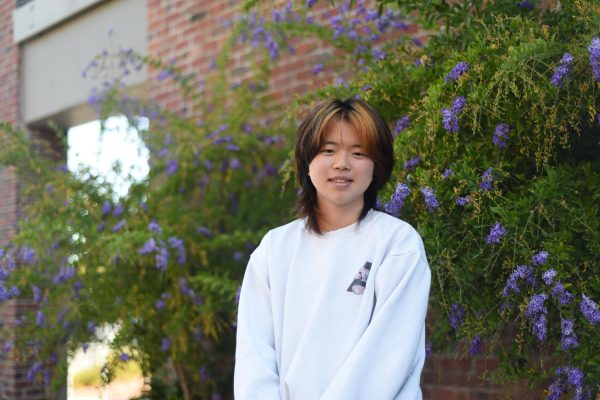Architecture, visual art, animation, cinematography, music and film — the products and impacts of art are visible everywhere. The people behind these art pieces are often funded or backed by a corporation. The relationship between these artists and corporations is complex, with both sides depending on the other for different reasons.
According to art department lead Brian Chow, on a basic level, art brings life to corporations. In corporate offices, it provides color and personality, allowing the workplace to feel more comfortable and less harsh. Beyond the offices, the design and psychology artists use in corporate products are what make them sell.
“Artists make corporations’ products actually useful,” Chow said. “It’s going to sound cliche, but art really makes everything interesting and worth living for. It certainly helps us enjoy our world or enjoy the products [and] services that entertain us.”
Senior Christina Lou is planning on attending the Maryland Institute College of Art and is planning to major in graphic design or product design. To Lou, artists are able to bend rules and create unique solutions to problems, which are highly valuable to corporations. They believe corporations often dismiss this skill, leading to them undervaluing and disrespecting artists.
“[Corporations are] very dehumanizing,” Lou said. “I think it’s very strange that our society is rooted in the fact that we have to be not humans in order to have time to be humans. We have to [listen to] someone tell you what to do, obey the orders of another person and be essentially a robot.”
Artists don’t have to work under corporations, but the money corporations provide can be necessary for an artist to survive. Even artists like Picasso had patrons backing them financially. Some artists can reject corporate backing, Art teacher Jay Shelton’s favorite band is the “Grateful Dead,” a band that gained their fanbase organically and lacks commercial backing. To Shelton, “Grateful Dead” reflects the rare artists who can maintain their integrity and creative freedom while still monetizing their art.
“If you’re one of these artists that starts organically [and] has a vision that’s pure to you, it is hard to do that in a corporate structure,” Shelton said. “If you want to make a film or a record and you want it to go out there on the market, you’re compromising at some level already. And once you start compromising, the artistic value is lessened just by necessity.”
Artists who don’t want to compromise on their artistic vision can pursue fine art. Fine art is defined as art created mostly for aesthetic purposes or creative expression rather than function, creating fewer restrictions on creative freedom. Chow believes the fine art approach, or the mindset that artists should only create for themselves, shouldn’t be applied to corporate jobs.
“[Fine art is] not what artists are hired to do [under] corporations, they’re hired to work within those constraints,” Chow said. “There’s going to always be limitations, within those limits [is] where the creativity comes out.”
With social media becoming more prevalent, the internet allows artists to bypass big corporations’ hiring processes and instead sell directly to consumers. Although artists are still impacted by corporations during their online careers, the internet can provide more creative freedom and the ability to accumulate social currency through followers and an online presence.
“You think about the starving artist as a 19th-century myth that still somehow finds its way into the 21st century,” Chow said. “In the past, if you [had] a painting you wanted to sell, you’d go to a gallery, they [would] represent you, promote your work and attract people to buy. [Now], you can put it online and put it out there through social media. I think that’s really wonderful.”
However, both Lou and Chow note that social media can also have negative consequences for artists. Lou believes the constant push for monetization can lead to burnout and contradict the self-expressive nature of art. According to Chow, unfair sponsorships easily exploit artists, and social media doesn’t always value artistic skill, instead focusing more on entertainment. He also believes the chance of making a living off social media is very low.

“You can pitch your product [online] and keep your integrity but you’re still dealing with the same competition you would have on the street, 40 [or] 50 years ago,” Shelton said. “If you get to a certain level of success, you’re contingent on pleasing somebody at a corporate level, and more likely than not, the artistic aspect is not yours.”
As the relationship between artists, social media and corporations continues to evolve, Lou hopes corporations and society as a whole will see the value artists provide.
“Art contributes to society a lot, there’s so much that people just don’t understand about it,” Lou said. “Our world needs artists — every consumer thing, every object that we have, an artist made.”











